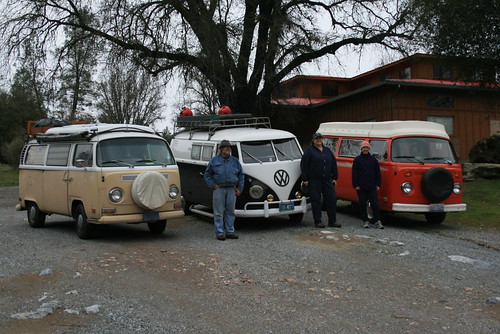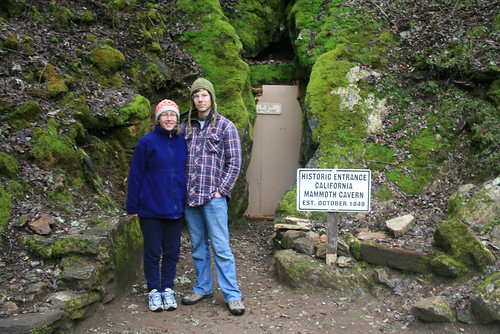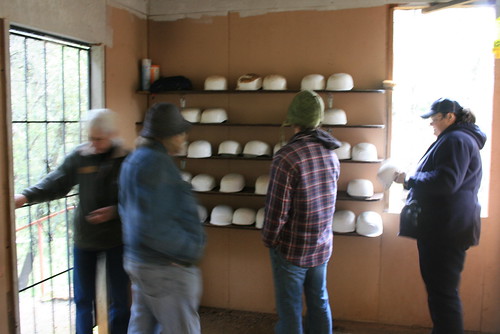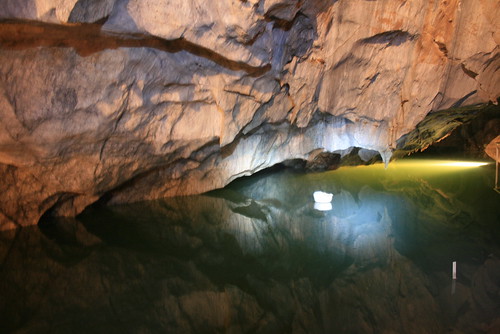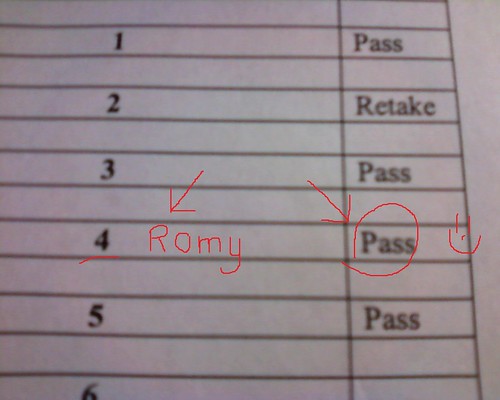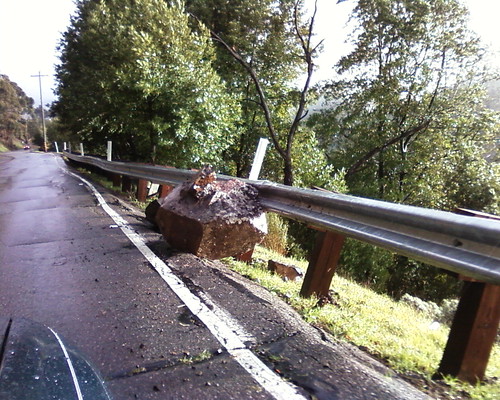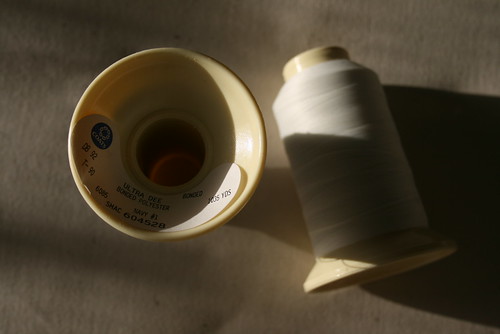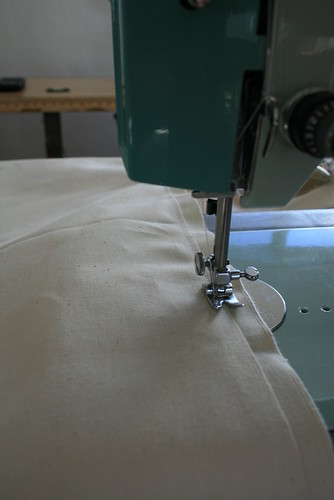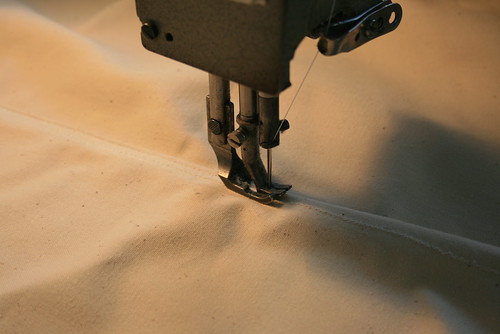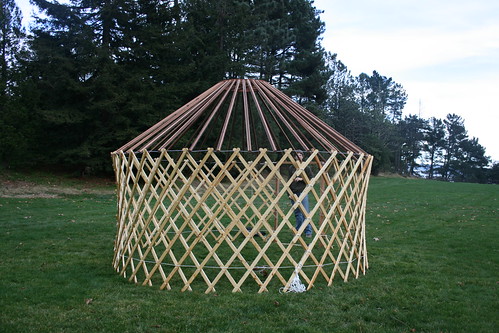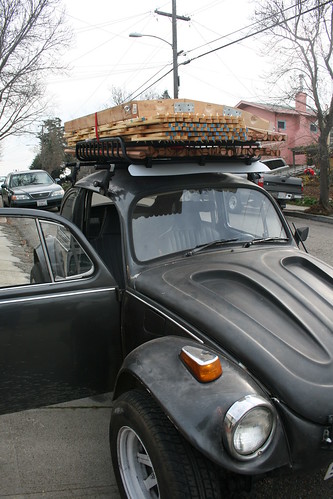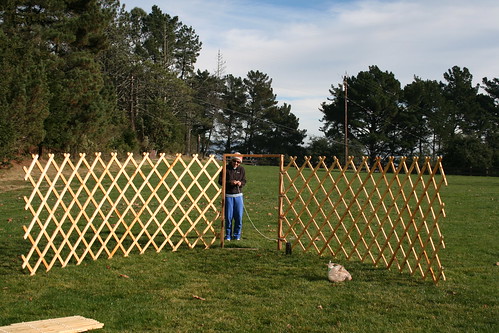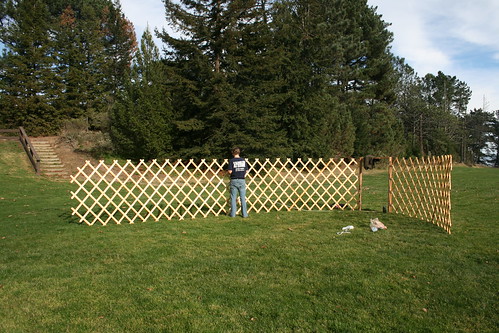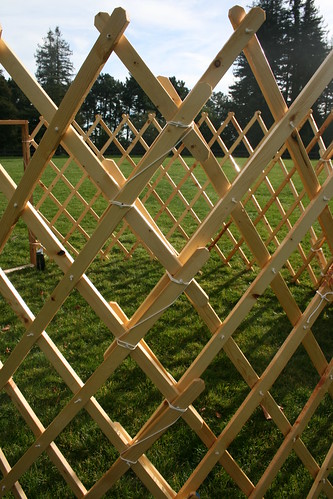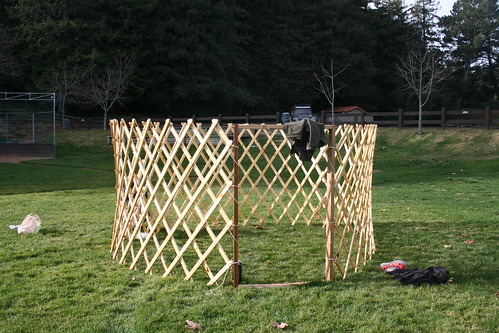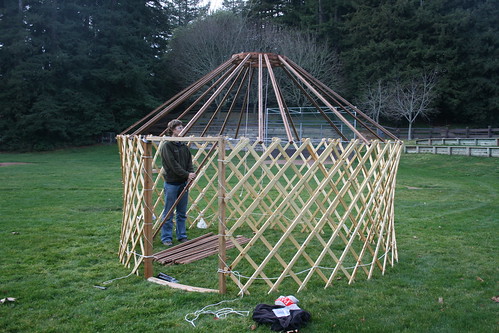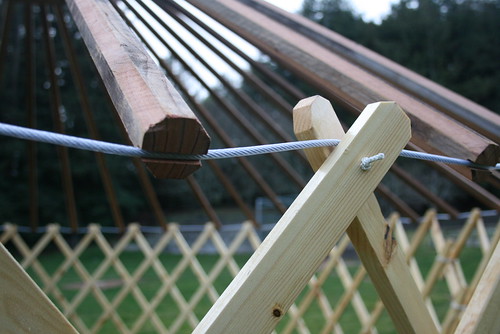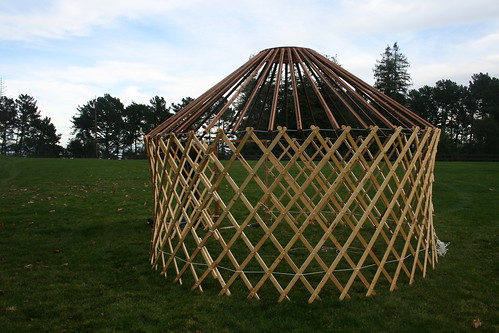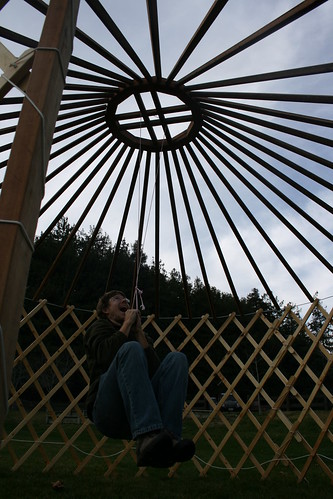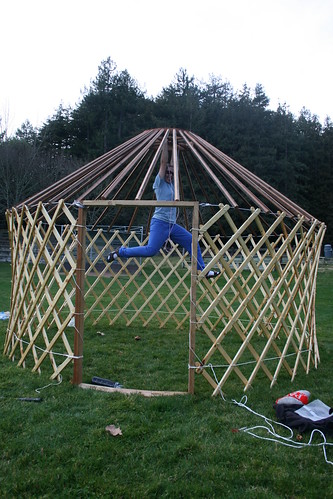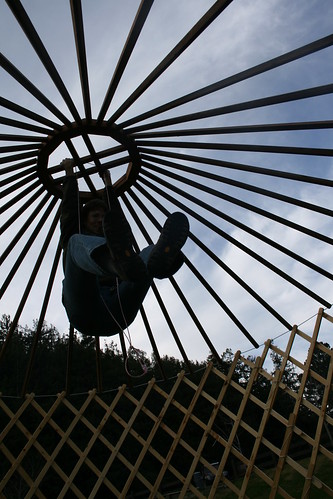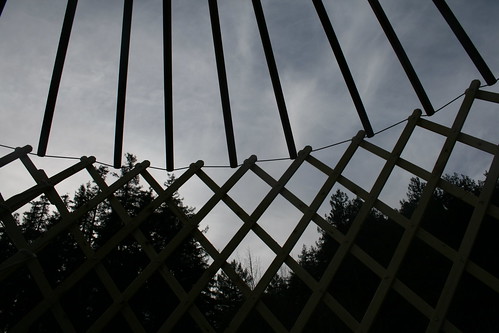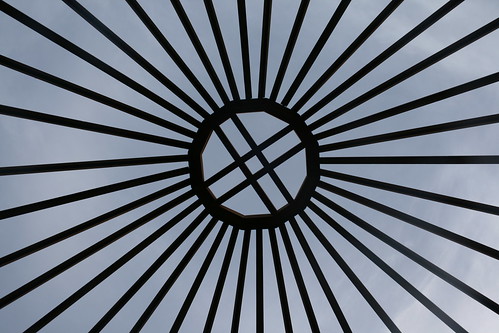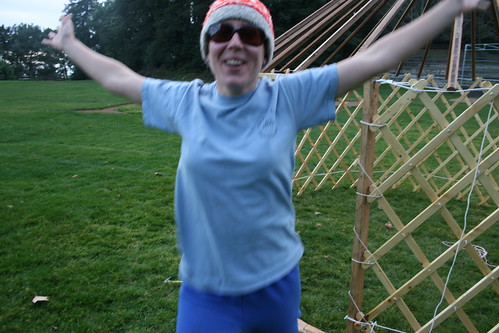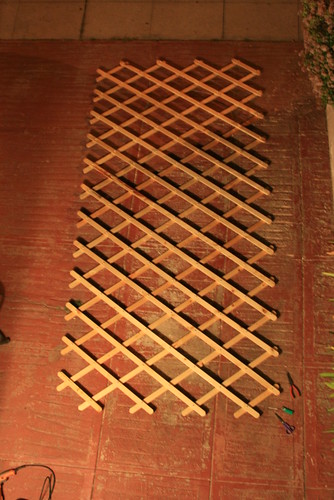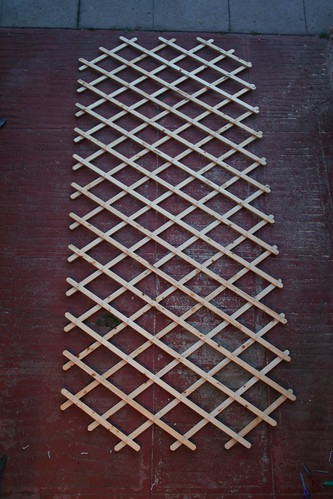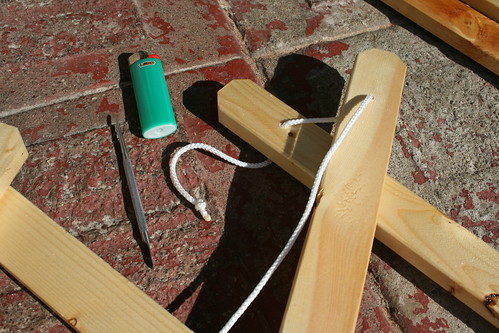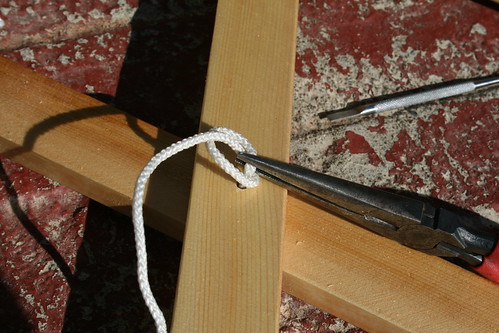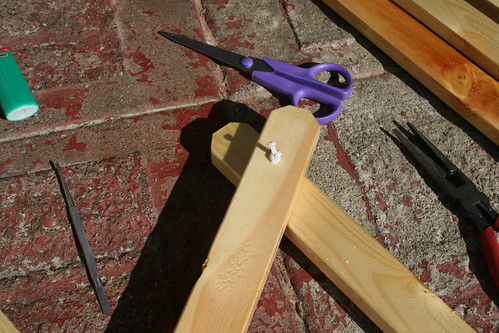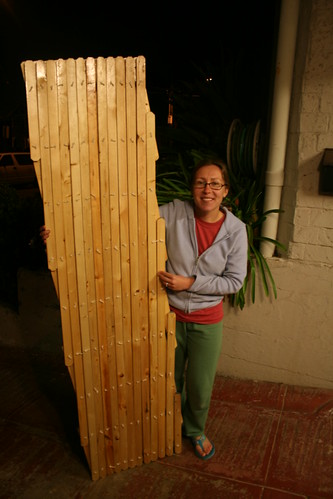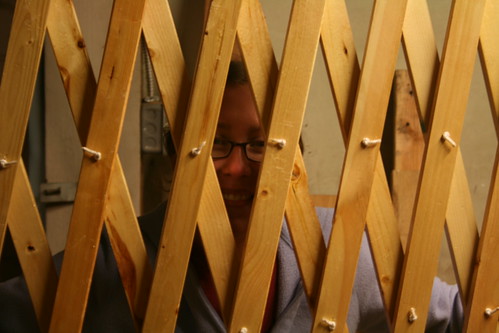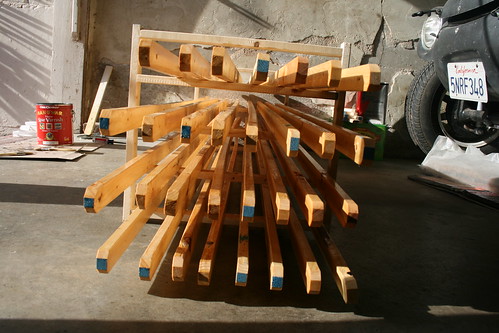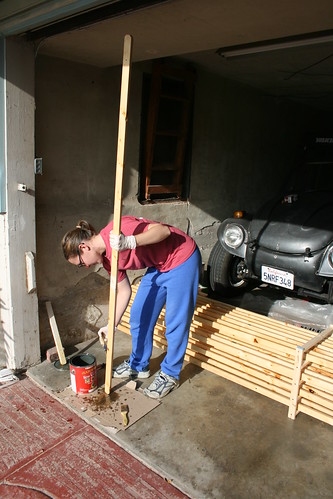So I got in contact with Wilbur Hot Springs, and again to my surprise, they really arranged for a free guest pass at the resort. Now I was getting excited to go check out the springs, because I had no idea there were hot springs so close. We arranged to go on Monday Jan 25th, right after the Caverns VWcamperfamily get-together.
It was a rainy wet day as we drove north from San Andreas, CA where the caverns were, through Sacramento and on through the Capay Valley. What a beautiful valley! I think it was nicer than Napa Valley, hands down! It was very narrow, with nice oak tree covered hills on either side. The valley was enshrouded with a hanging mist due to all of the moisture from the rain. We drove through it as the sun was going down. As we exited the valley, the road climbed through the hills, and we saw a bunch of BLM parking areas off the side of the road. Then we all of a sudden saw a bunch of elk in the hills. Elk!? I wondered if they might be farmed, because I thought elk only lived in the big mountains. Then there was another BLM pull off, so we pulled over to try to see the elk a little better and noticed an information sign. It was about the elk! The sign read that there used to be millions of wild Tule Elk that roamed the hills here, but they were all hunted to near extinction. Just 30 elk remained in the area until they were protected. Now there are a couple hundred and the population is rebounding. These are the same elk that I once saw in the Owens Valley by the Sierra Nevada mountains. We saw two herds along Hwy 16 by the BLM pull offs. In one of them, we saw an alpha male with his huge antlers looking over about 15 females. They were scared of the bus because it was loud. And just as we were going to drive a little closer, the bus gave out a loud lurch as Romy shifted into gear. Time for a clutch adjustment!

Anyways, back to the story about Wilbur Hot Springs. When it got dark Sunday night, we found a dirt access road on BLM land for hunters. I'm not quite sure what you could hunt, but the road was right off of Hwy 20, close to Wilbur where we were going to the next morning, and quiet and lots of level places where we could park the bus and stealth camp. It rained all night, and continued to into the morning. It was still raining when we woke up, and as we drove to Wilbur. The resort is totally off grid. They generate all of their own power with solar panels. The springs are tucked in between the hills in a canyon. They smell a bit of sulfur, which hits you as you get close, but then you get used to it.
After we checked in and they explained to us all of the rules, we were ready to check out the hot springs. The resort plumbed the hot source water into a Japanese style wooden open building which enclosed three flumes. The flumes were three long tubs, each had a different temperature. The coolest was 98F, then 105F, and the hottest was 110F. We tried all three. The water felt a little slimey, but I think it was because of the minerals in it. The tubs were pretty clean, and they were really big and room-y. We also had access to a dry sauna, and an outdoor cold pool, which was too cool to swim in for me.
We couldn't take any pictures by the pools, so here is a picture of the tubs from another website:

I read somewhere that the waters also have trace amounts of lithium in them. A lot of people at the resort who were there for a few days sure seemed loopy and uber relaxed. Especially in the communal kitchen, the people were all quiet and a little weird. But I don't know. . . I felt like I normally feel after being in a hot spring. Very nice and relaxed.
And of course, a big thank you to Michael who got us the day pass to Wilbur!
